As the snowflakes begin to dance and the temperatures plummet, winter roads transform into a challenging landscape. Driving in snow and ice isn’t just about navigating a different surface; it’s about mastering a whole new skill set. But don’t let the thought of icy patches or white-out conditions send shivers down your spine! With the right preparation, knowledge, and a confident attitude, you can absolutely conquer winter roads and arrive at your destination safely. This ultimate guide will equip you with 10 essential winter driving tips, transforming you from a hesitant winter driver into a seasoned road warrior. Get ready to embrace the frosty season with confidence, knowing you have the tools to navigate whatever Mother Nature throws your way!
1. Prepare Your Vehicle Like a Pro


Your vehicle is your first line of defense against winter’s wrath. Before the first flake falls, a thorough inspection and preparation are non-negotiable. Think of it as suiting up for an epic adventure!
Winter Tires: Your Grip on Reality
This isn’t just a suggestion; it’s a game-changer. Winter tires are specifically designed with unique rubber compounds that remain flexible in cold temperatures and tread patterns that bite into snow and ice, offering superior traction, braking, and handling compared to all-season tires. They can reduce braking distances by up to 25% on icy roads. That’s a huge difference when every foot counts! If you live in an area with consistent snow and ice, investing in a good set of winter tires is perhaps the single most impactful step you can take for your safety.
Battery Check: Power Through the Cold
Cold weather is brutal on car batteries. Have your battery and charging system tested by a professional. A weak battery might start your car on a mild autumn day but will likely fail when temperatures drop below freezing. Ensure terminals are clean and free of corrosion.
Fluid Levels: The Lifeblood of Your Ride
- Antifreeze: Check your coolant levels and ensure the antifreeze-to-water ratio is appropriate for sub-zero temperatures. This prevents your engine from freezing.
- Windshield Wiper Fluid: Fill your reservoir with winter-specific fluid that contains de-icer and won’t freeze. You’ll be using a lot of it to keep your visibility clear!
- Oil: Consider switching to a thinner multi-viscosity oil, like 5W-30, as recommended by your car manufacturer, for easier cold starts.
Wipers, Lights, and Brakes: See and Be Seen
- Wiper Blades: Replace old, cracked wiper blades. You need them to clear snow, ice, and slush effectively.
- Lights: Check all your lights – headlights, tail lights, brake lights, and turn signals – to ensure they are clean and fully functional. You need to see, and others need to see you!
- Brakes: Have your brakes inspected. Even stopping power is crucial on slippery surfaces. Ensure your ABS (Anti-lock Braking System) is functioning correctly.
Taking the time to ensure your vehicle is in peak condition for winter is not just about convenience; it’s about safety. Just as you might consider 5 essential auto improvements that keep you and other drivers safe for general driving, these winter-specific checks are paramount.
2. Master the Art of Slow and Steady


When roads are slick, your driving style needs a complete overhaul. Forget aggressive maneuvers; slow and steady wins the winter race.
Reduce Your Speed Drastically
This might seem obvious, but many drivers underestimate just how much slower they need to go. Posted speed limits are for ideal conditions, not for snow-covered or icy roads. Drive well below the speed limit, especially on highways and unfamiliar routes. The faster you go, the longer it takes to stop, and the less control you have.
Smooth Inputs Are Key
Imagine you’re driving on a bed of marbles. Sudden acceleration, harsh braking, or quick steering wheel movements will instantly break traction.
- Gentle Acceleration: Apply the gas pedal slowly and gradually to avoid spinning your tires. If your car has a “winter” mode, use it!
- Smooth Braking: Plan your stops far in advance and apply the brakes gently. Avoid stomping on them unless it’s an emergency.
- Delicate Steering: Make turns slowly and deliberately. Jerking the wheel can cause your vehicle to lose control.
Increase Your Following Distance
The rule of thumb for dry conditions is typically a 2-3 second following distance. On snowy or icy roads, this needs to be significantly extended – think 8 to 10 seconds, or even more. This gives you ample time to react to sudden stops or hazards ahead without having to brake hard. Remember, stopping distances can increase by up to ten times on ice!
3. Understand Braking Techniques for Slippery Conditions
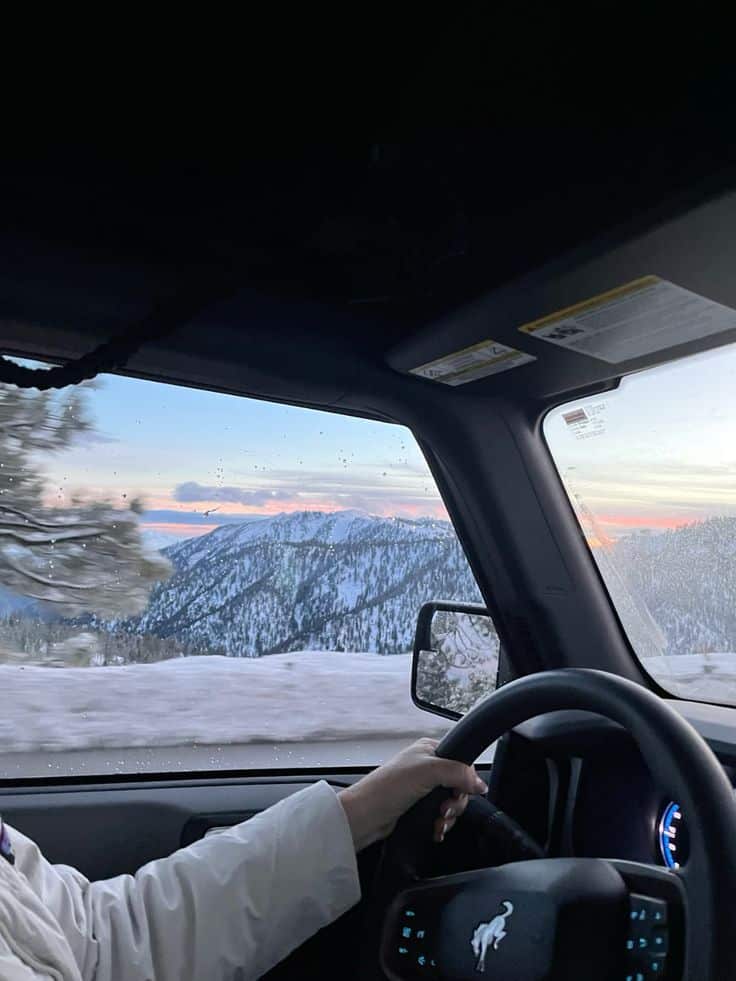

Braking on ice and snow requires a nuanced approach. Knowing how your car’s braking system works is crucial.
For Vehicles with ABS (Anti-lock Braking System)
Most modern vehicles are equipped with ABS. If you need to stop quickly on a slippery surface:
- Apply firm, continuous pressure to the brake pedal. Don’t pump the brakes!
- You might feel a pulsating or vibrating sensation through the pedal and hear a grinding noise. This is normal; it means the ABS is working, rapidly engaging and releasing the brakes to prevent wheel lock-up and maintain steering control.
- Steer in the direction you want to go. ABS allows you to steer while braking, which is critical for avoiding obstacles.
For Vehicles Without ABS
If your vehicle doesn’t have ABS, the technique is different:
- “Pump” the brakes gently. Apply steady pressure until the wheels are just about to lock up, then release slightly, and repeat. This manually prevents wheel lock-up, similar to what ABS does automatically.
- The goal is to slow down without skidding. If your wheels lock up, you’ll lose steering control.
Regardless of your car’s system, the most important advice is to anticipate stops and begin braking much earlier than you would on dry pavement.
4. Navigate Turns and Curves with Caution

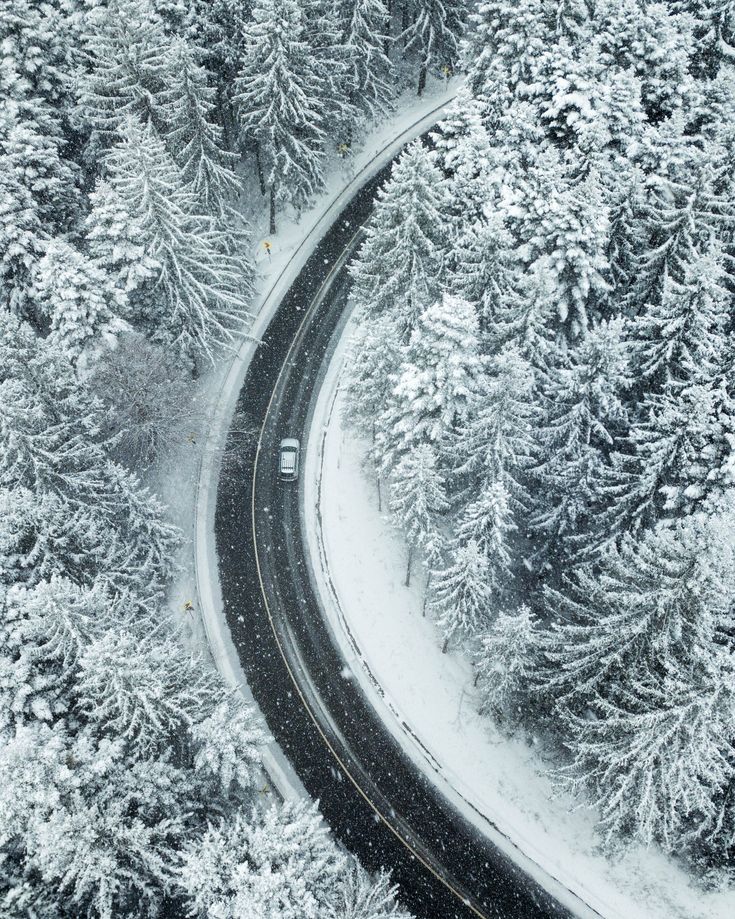
Turning on a slippery road is where many drivers get into trouble. Here’s how to do it safely.
Slow Down Before the Turn
Reduce your speed significantly before you enter the curve or turn. Braking during a turn on ice or snow is extremely risky and can easily cause a skid.
- Enter the turn slowly: Once you’re in the turn, maintain a constant, very light throttle or coast, and gently steer through.
- Exit the turn slowly: As you straighten out, you can gradually apply a little more power. The mantra is “slow in, slightly faster out.”
Avoid Sudden Steering Inputs
Just like with braking, sudden changes in direction can cause your tires to lose traction. Steer smoothly and deliberately. Look where you want to go and guide your car there with gentle, controlled movements. Imagine your steering wheel is made of glass and you don’t want to crack it!
5. Combat Limited Visibility with Vigilance
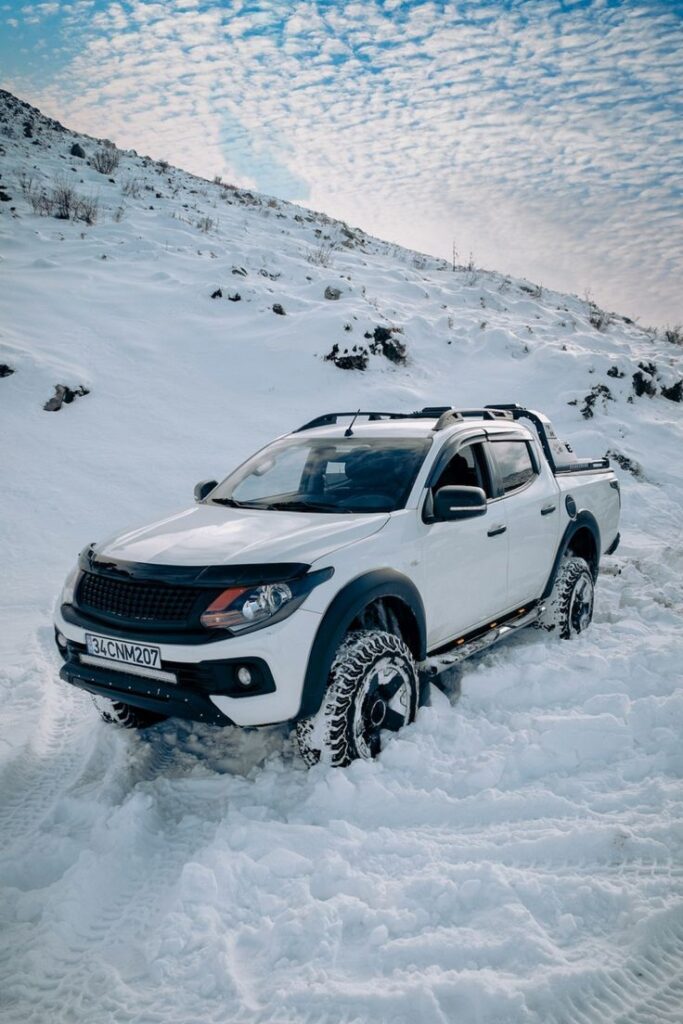
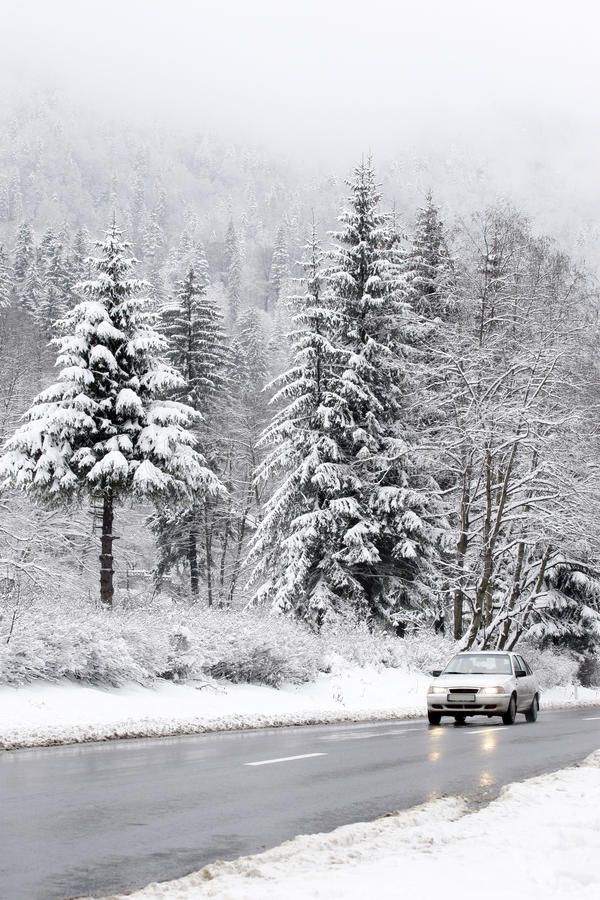
Winter often brings more than just snow and ice; it brings fog, blizzards, and freezing rain, all of which severely limit visibility.
Use Your Lights Wisely
- Headlights On: Always drive with your low-beam headlights on, even during the day, in snowy, rainy, or foggy conditions. This makes you more visible to others.
- Fog Lights (if equipped): Use your fog lights in dense fog or heavy snowfall. They are designed to illuminate the road closer to your vehicle without reflecting glare back into your eyes like high beams do. Remember to turn them off when conditions improve.
- Clear Your Lights: Ensure all headlights and taillights are clear of snow and ice before you start driving and throughout your journey if conditions are severe.
Keep Windows and Mirrors Crystal Clear
This seems basic, but it’s astonishing how many drivers neglect this.
- Defrost Thoroughly: Don’t start driving until your windshield, rear window, and side mirrors are completely defrosted and clear. Scrape off all ice and snow.
- Wiper and Defroster Use: Keep your wipers working effectively and your defroster on high to prevent fogging and ice buildup while driving.
- Regular Cleaning: Pull over safely to clear your windshield wipers if they become caked with snow or ice, or if your visibility significantly deteriorates.
Know When to Pull Over or Stay Home
Sometimes, the safest option is to not drive at all. If visibility drops to near zero, or if the conditions feel overwhelmingly dangerous, find a safe place to pull off the road – ideally a well-lit area away from traffic – and wait for conditions to improve. No trip is worth risking your life over.
6. Be Wary of Black Ice: The Silent Killer


Black ice is perhaps the most treacherous winter driving hazard because it’s virtually invisible. It’s a thin, transparent layer of ice that forms on the road surface, often blending in perfectly with the asphalt.
How to Spot and Anticipate Black Ice
- Temperature Drop: Black ice often forms when temperatures hover around freezing (0°C or 32°F), especially after rain or melting snow.
- Shaded Areas: Areas shaded by trees, buildings, or overpasses are prime locations for black ice, as they don’t receive direct sunlight to melt the ice.
- Bridges and Overpasses: These structures are exposed to cold air from above and below, causing them to freeze faster and stay frozen longer than regular roads.
- Lack of Spray: If you’re driving and notice the spray from other vehicles’ tires has suddenly stopped, it could indicate a patch of black ice ahead.
What to Do If You Encounter Black Ice
If you suddenly feel your steering go light, or your tires briefly lose grip, you’ve likely hit black ice.
- DO NOT PANIC! This is crucial.
- DO NOT BRAKE HARD! This will almost certainly cause a skid.
- Ease off the accelerator gently.
- Keep the steering wheel straight. Avoid making any sudden steering corrections.
- Allow your vehicle to glide over the ice. As your tires regain traction on the other side, you can slowly and gently steer back to your lane and proceed with extreme caution.
- Drive defensively: Assume all bridges, overpasses, and shaded areas have black ice on them.
7. Equip a Comprehensive Emergency Kit

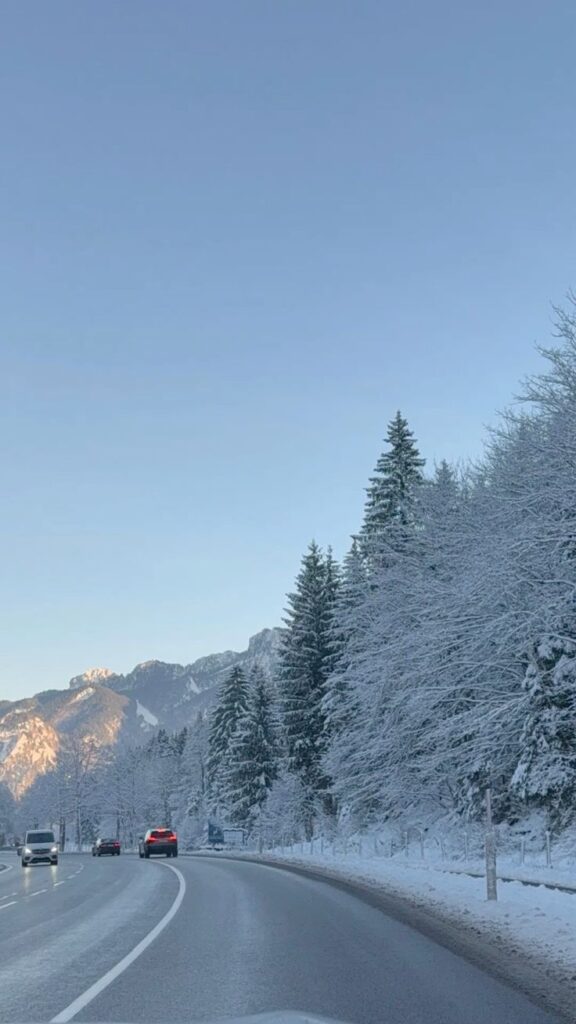
Even the most prepared driver can encounter an unexpected situation. A well-stocked emergency kit is your lifeline if you break down or get stuck. Just like preparing your home for seasonal changes, knowing how to get ahead of the chill with fall projects that pay off in winter, preparing your car is equally vital.
Essentials for Your Winter Car Kit:
- Warm Clothing & Blankets: Heavy blankets, extra hats, gloves, scarves, and insulated boots are critical. Even if you’re only going on a short trip, having these could save you from hypothermia if you’re stranded. Think about the closet essentials for a cozy winter style – you need similar items in your car!
- First-Aid Kit: A basic kit with bandages, antiseptic wipes, pain relievers, and any personal medications.
- Food and Water: Non-perishable snacks (energy bars, dried fruit) and bottled water.
- Shovel: A small, collapsible shovel to dig your tires out of snow.
- Traction Aid: A bag of sand, cat litter (non-clumping), or a traction mat to place under spinning tires.
- Jumper Cables: A dead battery is a common winter problem.
- Flashlight with Extra Batteries: For seeing in the dark.
- Phone Charger/Portable Power Bank: To keep your phone alive.
- Warning Triangles or Flares: To alert other drivers to your presence.
- Small Toolkit: Pliers, screwdriver, wrench for minor repairs.
- Brightly Colored Cloth: To tie to your antenna or window as a distress signal.
- Whistle: To attract attention.
Regularly check and refresh your emergency kit to ensure everything is functional and ready for use.
8. Plan Your Journey Wisely

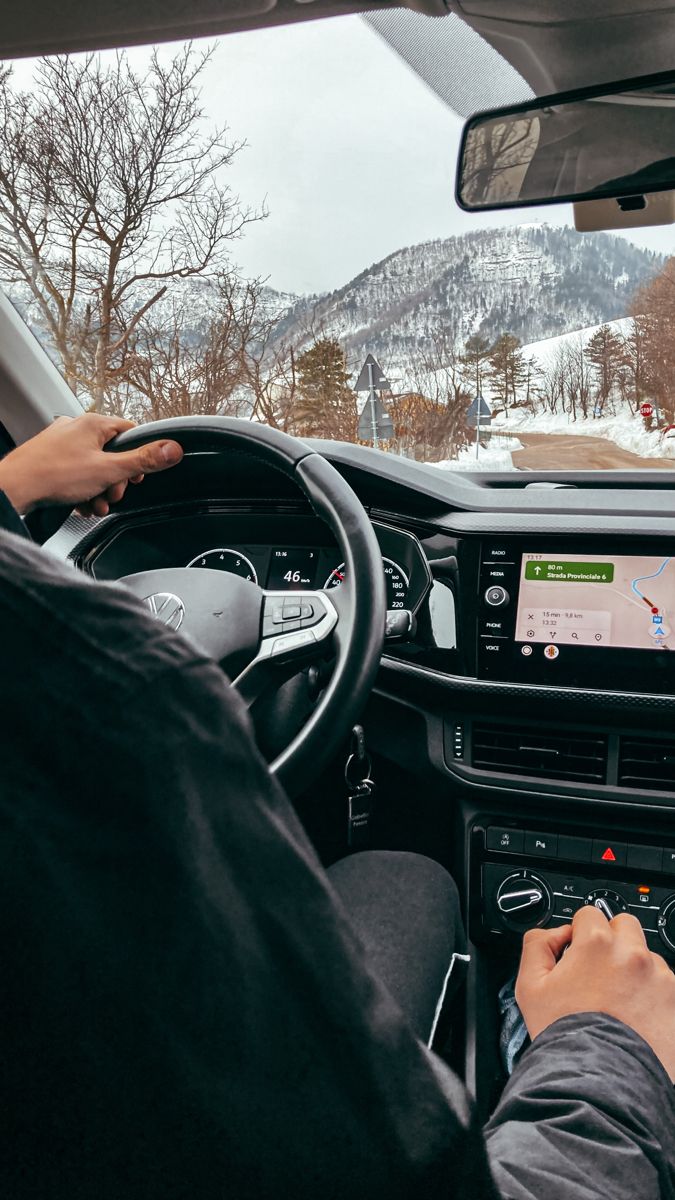
Preparation extends beyond your vehicle and kit; it includes your route and awareness of conditions.
Check the Weather Forecast and Road Conditions
Before every winter journey, check local weather forecasts and road condition reports. Websites, apps, and local news provide invaluable information on snowfall, ice warnings, road closures, and traffic delays. Don’t rely solely on how the weather looks outside your window; conditions can change rapidly.
Inform Others of Your Route and Estimated Arrival
If you’re embarking on a longer trip, let a trusted friend or family member know your departure time, planned route, and estimated time of arrival. This way, if something happens and you don’t arrive, someone knows to check on you.
Consider Alternative Routes or Postpone Travel
If conditions are severe, ask yourself if the journey is truly necessary. Is there an alternative route that might be safer, even if it’s longer? Sometimes, the smartest decision is to postpone your trip until conditions improve. Your safety is paramount.
9. Stay Calm, Focused, and Patient


Winter driving is as much a mental game as it is a physical one. Maintaining a calm and focused demeanor can prevent many accidents.
Avoid Distractions
Put your phone away. Turn down the radio. Focus 100% of your attention on the road ahead, your surroundings, and the feel of your vehicle. Every ounce of concentration is needed to react to changing conditions, spot hazards like black ice, and adjust your driving accordingly.
Practice Defensive Driving
Assume other drivers might not be as prepared or cautious as you are. Be extra vigilant for erratic behavior, sudden braking, or vehicles losing control. Create a “buffer zone” around your car, giving yourself space and time to react to anything unexpected. This proactive approach helps you anticipate and avoid potential collisions.
Patience is a Virtue
Winter conditions inherently slow everything down. Traffic moves slower, lines are longer, and delays are common. Trying to rush or become impatient will only increase your stress levels and your risk of an accident. Take deep breaths, allow extra travel time, and accept that getting there safely is more important than getting there quickly.
10. Learn How to Recover from a Skid

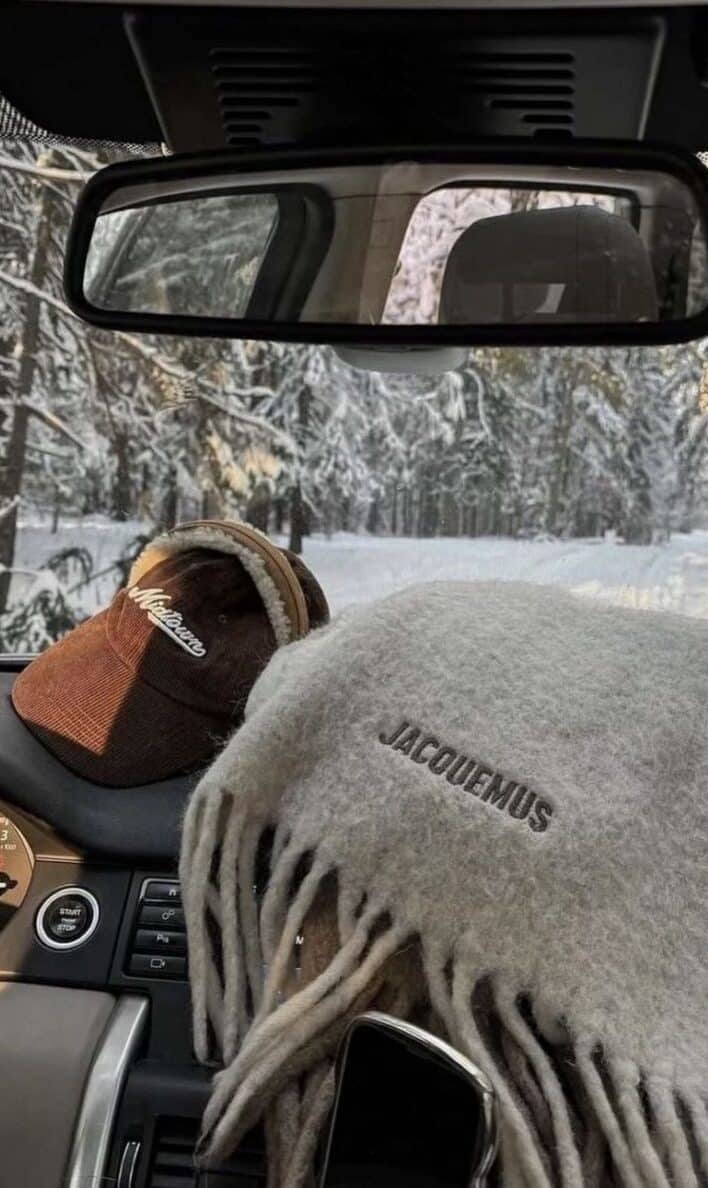
Even with the best precautions, skids can happen. Knowing how to react calmly and correctly can mean the difference between recovering safely and losing control.
Identify the Type of Skid
- Understeer (Front-Wheel Skid): Your front wheels lose traction, and the car tends to go straight even if you’re turning the wheel. This often happens if you enter a corner too fast.
- Oversteer (Rear-Wheel Skid): Your rear wheels lose traction, causing the back of the car to swing out. This can happen with sudden acceleration or braking, or sharp steering.
How to Correct a Skid (The Golden Rule)
The fundamental principle for skid recovery is to steer in the direction you want the front of the car to go.
- For Understeer (Front-Wheel Skid):
- Ease off the accelerator.
- Do not brake hard.
- Slightly reduce your steering input to allow the front tires to regain grip, then gently steer back in the desired direction.
- Be patient; the car needs a moment to respond.
- For Oversteer (Rear-Wheel Skid – often called “fishtailing”):
- Ease off the accelerator.
- Do not brake hard.
- Steer into the skid: If the rear of your car is sliding to the right, steer gently to the right. If it’s sliding to the left, steer gently to the left.
- As the car begins to straighten, counter-steer (steer the opposite way) to prevent the car from skidding in the other direction. This requires quick, precise adjustments.
Practice in a Safe Environment
If possible, find an empty, snow-covered parking lot (with the owner’s permission) to practice these techniques at very low speeds. Experiencing a controlled skid and learning to correct it can build confidence and muscle memory that will be invaluable in a real emergency. Remember, safety in all environments, from personal well-being to designing and constructing facilities for long-term safety and sustainability, hinges on foresight and proper preparation.
Conclusion: Drive Confidently, Drive Safely
Winter driving doesn’t have to be a source of dread. By embracing these 10 essential tips, you’re not just preparing your car; you’re empowering yourself with knowledge, skill, and confidence. From equipping your vehicle with the right tires and an emergency kit to mastering gentle driving techniques and understanding how to recover from a skid, every piece of advice contributes to your overall safety on challenging winter roads.
Remember, patience, awareness, and proactive preparation are your best allies. Take the time to ready your car, plan your routes, stay focused behind the wheel, and always prioritize safety over speed. So, go ahead, conquer those winter roads with a newfound sense of confidence and enthusiasm! Stay safe out there, and enjoy the beauty of the winter season without the worry.
- 446shares
- Facebook0
- Pinterest446
- Twitter0


